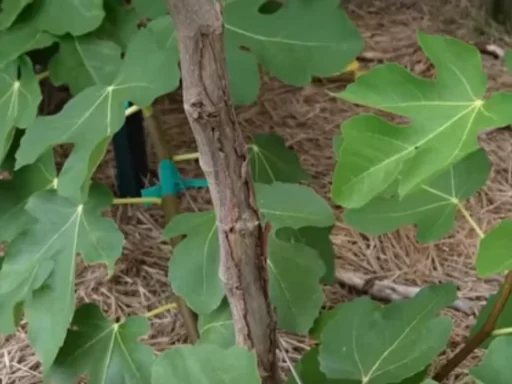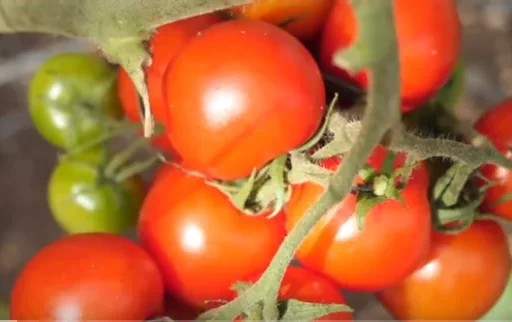Growing broccoli might seem straightforward, but many gardeners find it more challenging than expected. Temperature fluctuations can cause broccoli to either bolt prematurely or suffer from frost damage, which makes achieving a perfect head of broccoli tricky. After years of trial and error, I’ve discovered four essential tips that have revolutionized my broccoli-growing experience. In this article, I’ll share these techniques to help you grow perfect heads of broccoli every time, regardless of where you live.
Why is Growing Broccoli So Difficult?
Broccoli belongs to the Brassica family, which is highly sensitive to temperature changes. While broccoli is frost-hardy, the heads themselves are fragile and can be easily damaged by frost. At the same time, even a few days of unseasonably warm weather can cause broccoli to bolt, sending it into flower and rendering the head unusable. To complicate matters further, broccoli thrives in a narrow temperature range—daytime temperatures of around 55°F and nighttime temperatures between 40°F and 45°F.
This means that broccoli needs consistently mild weather to develop properly, which is difficult to achieve in many parts of the world, especially in the U.S. However, through years of experimenting, I’ve found ways to manage these temperature challenges, allowing me to grow broccoli successfully in climates that are far from ideal.
Tip #1: Start Broccoli Indoors as Transplants
The most important tip for growing broccoli is to start the plants indoors as transplants rather than sowing seeds directly in the garden. Since broccoli needs a specific temperature range to mature, starting them indoors allows you to give the plants a head start and transplant them at just the right time.
To do this, start your broccoli seeds indoors 7 to 9 weeks before the ideal transplanting time in your region. By the time outdoor temperatures are suitable, your broccoli will be ready for transplanting as large, mature plants. This is crucial because the short window of ideal temperatures for broccoli to mature means you need every advantage you can get.
Tip #2: Transplant Earlier Than You Think
Another game-changing tip is to transplant your broccoli 2 to 4 weeks earlier than recommended. This means you’ll be transplanting broccoli in the summer for a fall harvest or in late winter for a spring harvest—both periods when the temperatures may not yet be ideal.

When transplanting early in the summer, protect your plants with shade cloth to shield them from the hot sun. Conversely, in late winter or early spring, cover the transplants with frost cloth to protect them from the cold. By doing this, you give your broccoli a head start, allowing the plants to grow stronger and develop heads during the optimal temperature window. This strategy has significantly improved my broccoli yields.
Tip #3: Protect Your Broccoli from Frost
Although broccoli plants can survive frosts, the heads are vulnerable to damage. Each time you expect a frost, cover your broccoli with frost cloth or a row cover. This extra step may seem tedious, but it’s worth it to protect the delicate heads.
Over the years, I’ve learned that even a light frost can damage the heads, leading to stunted growth or unappetizing, damaged heads of broccoli. To avoid this, I now cover my broccoli plants every time the temperature drops below freezing. Agricultural fabric works well because it allows light through, meaning you can leave it on during cold spells without negatively affecting the plants.
Tip #4: Use Shade Cloth During Warm Weather
Warm weather can be just as detrimental to broccoli as cold weather. If temperatures rise above 65°F, it’s essential to protect your broccoli with shade cloth. Prolonged warm weather can cause the heads to bolt, ruining your entire crop.
Shade cloth is especially important if you’re growing broccoli in the spring, as warm weather is more likely to occur during this time. Covering the plants with shade cloth will keep the temperature down, preventing premature flowering and helping the heads develop fully.
Harvesting Broccoli Correctly
Once your broccoli heads are ready to harvest, be sure not to cut down the entire plant. Instead, cut off the main head and leave the side shoots, as these will continue to produce small florets, extending your broccoli harvest. Early-maturing varieties tend to produce smaller heads but are better suited to climates with erratic weather, like the Southeast.
These tips have allowed me to grow consistently beautiful broccoli despite the unpredictable weather in North Carolina. While my broccoli heads may not be as large as those found in grocery stores, they are homegrown, organic, and delicious. By employing these strategies, you can also achieve broccoli-growing success in your garden.
Frequently Asked Questions (FAQs)
- What is the ideal temperature range for growing broccoli? Broccoli thrives in daytime temperatures around 55°F and nighttime temperatures between 40°F and 45°F.
- When should I start my broccoli seeds indoors? You should start your seeds indoors 7 to 9 weeks before the expected transplanting time in your region.
- Why should I use shade cloth when growing broccoli? Shade cloth helps protect broccoli from warm temperatures, preventing the plants from bolting prematurely.
- Can broccoli survive frost? While broccoli plants can survive frost, the heads are delicate and can be damaged by freezing temperatures, so covering them with frost cloth is recommended.
- How do I know when my broccoli is ready to harvest? Broccoli is ready to harvest when the heads are firm and the buds are tightly packed. Cut the main head but leave the side shoots for a continued harvest.
- Can I grow broccoli in the spring? Yes, you can grow broccoli in the spring, but it’s more difficult due to temperature fluctuations. Shade cloth can help protect plants during warm spells.
- What are the best broccoli varieties for unpredictable weather? Early-maturing varieties are best for climates with erratic weather, as they have a shorter growing period and are less likely to bolt.




